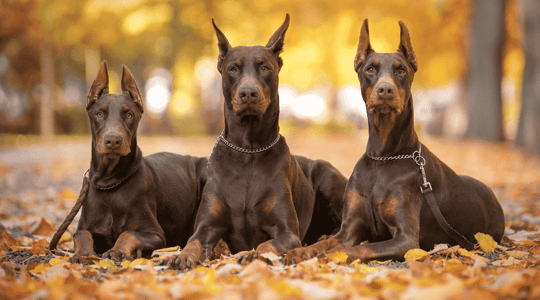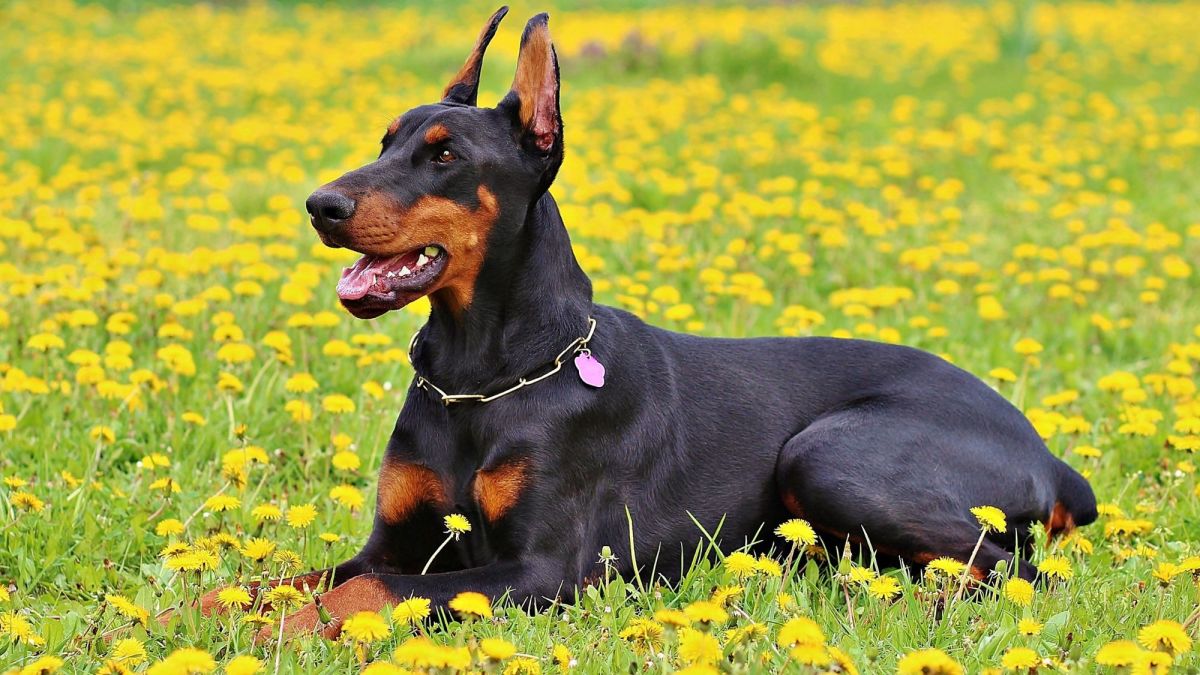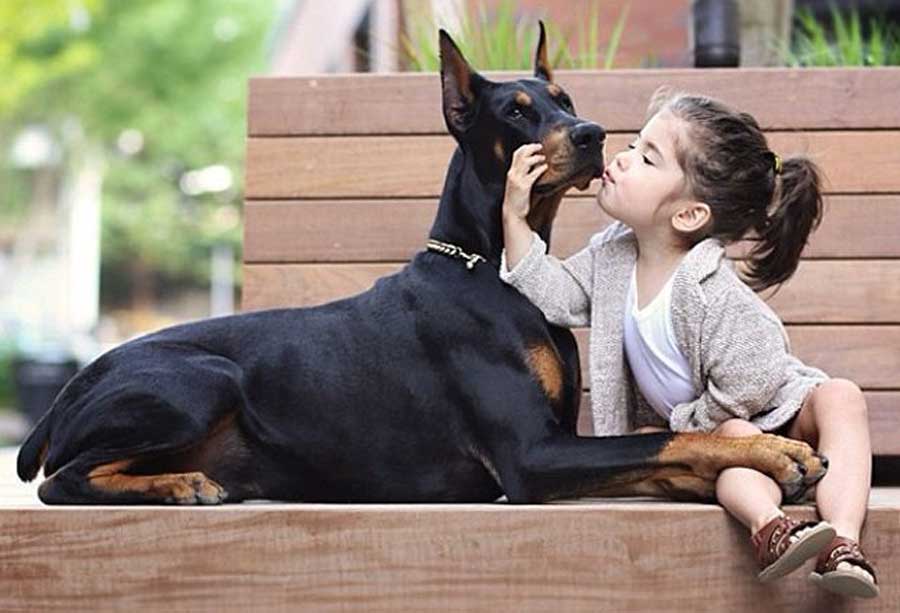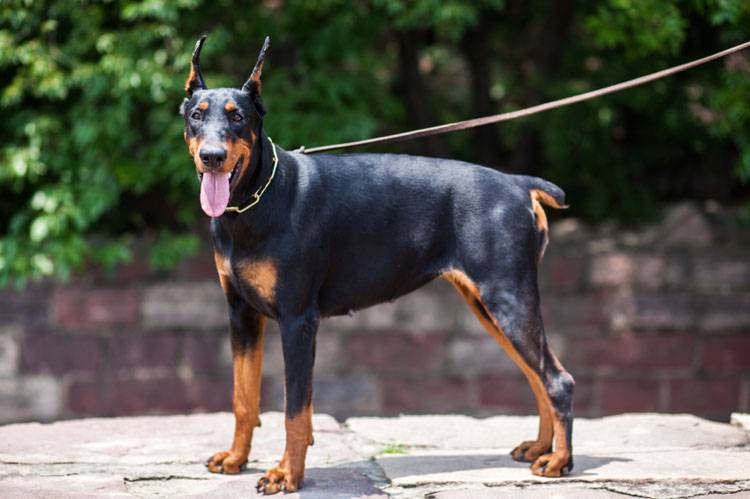The Doberman Pinscher: A Versatile Breed with a Rich Heritage
Introduction:
The Doberman Pinscher, often simply referred to as the Doberman, is a striking and versatile breed that has captivated dog lovers worldwide. Known for their sleek appearance, intelligence, and unwavering loyalty, Dobermans have a rich heritage rooted in their origins as working dogs. From their beginnings in 19th-century Germany to their roles as police and military K-9s, Dobermans have earned a reputation for their fearlessness and adaptability. In this article, we will explore the history, characteristics, temperament, training, and modern-day roles of the Doberman Pinscher, shedding light on why they continue to be cherished companions and guardians.
History:
The history of the Doberman Pinscher dates back to the late 19th century in Germany. The breed was developed by a tax collector named Karl Friedrich Louis Dobermann, who aimed to create a versatile and reliable working dog to accompany him on his rounds. Dobermann bred several different dog breeds, including the Rottweiler, German Pinscher, Greyhound, and Weimaraner, to create the foundation for what would become the modern Doberman Pinscher.
The breed was initially known as the Thuringian Pinscher, but after Dobermann's death in 1894, it was officially named the Dobermann Pinscher in his honor. The word "Pinscher" refers to a type of terrier, emphasizing the breed's original role as a rat-catcher and guardian.
During the early 20th century, Dobermans gained popularity not only in Germany but also in other parts of Europe and the United States. They were recognized for their versatility and intelligence, excelling in various roles such as police work, military service, search and rescue, and even as therapy dogs.
Characteristics:
Dobermans are known for their sleek, muscular build and elegant appearance. They typically stand between 24 to 28 inches tall at the shoulder and weigh anywhere from 60 to 100 pounds, with males being larger than females. The breed's coat is short, smooth, and typically comes in four standard colors: black, red, blue, and fawn, often with rust-colored markings.
One of the most distinctive features of the Doberman is its cropped ears and docked tail, although these practices are controversial and increasingly being discouraged or banned in many countries. Properly cared for, a Doberman's natural ears and tail are equally striking and add to the breed's unique charm.
Temperament:
Despite their imposing appearance, Dobermans are known for their gentle and affectionate nature towards their families. They are incredibly loyal and form strong bonds with their owners, often displaying a protective instinct that makes them excellent guard dogs. However, early socialization and training are crucial to ensure that their protective instincts are appropriately balanced.
Dobermans are highly intelligent and eager to please, which makes them relatively easy to train for experienced owners. They excel in obedience training, agility, and various canine sports. However, they are also sensitive dogs that require positive reinforcement and consistent leadership to thrive.
Training:
Training a Doberman requires patience, consistency, and a firm but gentle approach. Positive reinforcement techniques, such as praise, treats, and play, work best with this breed. Harsh training methods or punishment can lead to distrust and resistance, undermining the bond between the dog and its owner.
Basic obedience training should begin early in a Doberman's life to establish boundaries and prevent undesirable behaviors. This includes commands such as sit, stay, come, and heel. Socialization is equally important to expose the dog to different people, animals, and environments, helping to ensure that they grow up to be well-rounded and confident adults.
Modern-Day Roles:
In contemporary society, Dobermans continue to serve in various roles, showcasing their adaptability and versatility. While they are still employed as police and military K-9s in many parts of the world, they have also found success in other fields such as search and rescue, therapy work, and competitive dog sports.
In recent years, there has been a growing trend towards Dobermans as beloved family pets and companions. With proper training, socialization, and care, they thrive in loving homes where they are treated as valued members of the family. Their loyalty, intelligence, and affectionate nature make them wonderful companions for individuals and families alike.
The Doberman Pinscher is a remarkable breed with a rich history and a multitude of admirable qualities. From their origins as working dogs bred for protection and companionship to their modern-day roles as beloved family pets and versatile working dogs, Dobermans have left an indelible mark on the hearts of dog lovers worldwide.
While their imposing appearance may be intimidating to some, those who know the breed understand that beneath the surface lies a gentle and loyal companion. With the right care, training, and environment, Dobermans thrive as devoted members of the family, bringing joy, companionship, and unwavering loyalty to those fortunate enough to share their lives with them. Furthermore, the Doberman Pinscher's legacy extends beyond their physical attributes and roles. They have left an indelible mark on popular culture, appearing in films, television shows, and literature as symbols of strength, loyalty, and courage. From the iconic portrayal of a Doberman as a loyal companion in the film "Hollywood Hounds" to their depiction as fearless guardians in works of fiction, such as books by renowned authors like Dean Koontz, Dobermans have captured the imagination of audiences around the world.
Furthermore, the Doberman Pinscher's legacy extends beyond their physical attributes and roles. They have left an indelible mark on popular culture, appearing in films, television shows, and literature as symbols of strength, loyalty, and courage. From the iconic portrayal of a Doberman as a loyal companion in the film "Hollywood Hounds" to their depiction as fearless guardians in works of fiction, such as books by renowned authors like Dean Koontz, Dobermans have captured the imagination of audiences around the world.
However, despite their enduring popularity and many admirable qualities, it's essential to recognize that Dobermans are not the right fit for every household. Their high energy levels, need for mental stimulation, and protective instincts require dedicated owners who are willing to invest time and effort into their care and training. Additionally, prospective owners should be aware of potential health concerns commonly associated with the breed, such as hip dysplasia, heart disease, and bloat, and take proactive measures to maintain their Doberman's health and well-being.
In conclusion, the Doberman Pinscher stands as a testament to the enduring bond between humans and dogs. From their humble beginnings as working dogs bred for utility to their present-day roles as cherished companions and versatile working dogs, Dobermans embody loyalty, intelligence, and unwavering devotion. Whether serving in law enforcement, providing therapy to those in need, or simply being a loving presence in the home, the Doberman Pinscher continues to inspire admiration and affection in all who have the privilege of knowing them.



































































